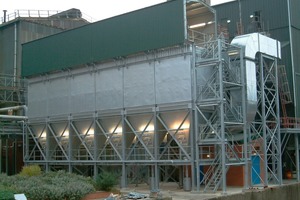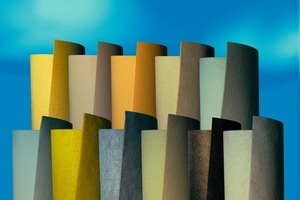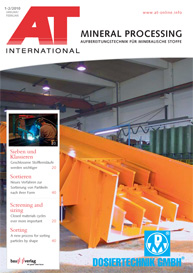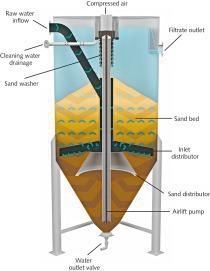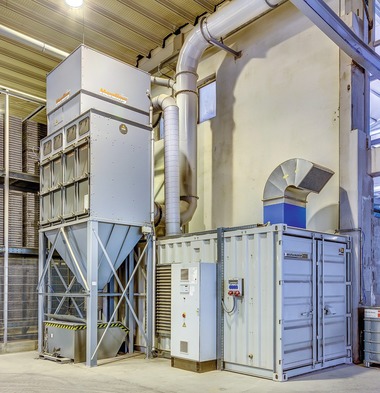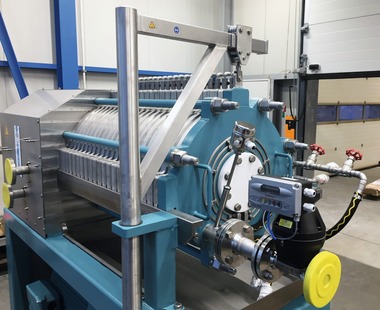Saving energy – saving costs
Pennaire Filtration has recently provided a technolo-gically advanced filtration solution involving a new
fully automated multi-chamber reverse jet bag filter at
a metal powder production plant in the UK. As a
major manufacturing enterprise, the Company which procured the new filtration system strives to be environmentally responsible and took a pro-active approach to improve their emissions from one of their processes.
The plant manufactures nickel pellets from the base ore for use in the steel and car industries; this process results in nickel oxide (NiO2) emissions being released into the atmosphere. The previous filtration system used an electrostatic precipitator (ESP). An ESP is a particulate collection device which removes particles from a flowing gas using the force of an induced electrostatic charge. The production process required the use of two ESP’s on the site. This arrangement was necessary to allow for online cleaning to take place and reduced production downtime when either of the units was being serviced. Although emissions from the existing ESP’s complied with current legislation, the user acknowledged they were very close to the environmental licence level. Recognising their environmental responsibilities combined with the high energy consumption of the ESP’s the Company made the decision to seek an advanced particulate filtration technology to replace the ageing abatement
plant.
Pennaire Filtration suggested an effective solution to dramatically reduce the emission levels and energy consumption by changing the current ESP to a multi-chamber bag house filter system. To ensure that the new system would be able to meet the required performance levels, the end-user decided to run trials on the systems to compare emissions. The filter system was installed in parallel alongside the ESP system whilst running; the final break in being conducted without any shutdown to the process. This installation method
provided a number of significant benefits to the plant.
Not only were they able to conduct comparative performance tests on each individuals system (bag filter versus ESP), they also retained the requisite emission controls in the
event of any issues on the commissioning of the new bag filter.
Although the ESP is still in-situ, it is no longer in use; the gas flows directly through the two ESP’s and into the bag filter. The design of the new filtration system allowed for the ESP’s to stay in place causing minimal disruption to the plant and production process.
2 Bag filter and media
Following a full technical evaluation, Pennaire Filtration designed, manufactured and supplied a bespoke bag filter system incorporating the very latest filter media and pulse-jet cleaning technology. The new bag house filter is situated on the back of the current ESP system (Fig. 1). The multi- chamber filter contains 6 compartments comprising of 288 off tubular filter bags mounted on support cages. Pennaire Filtration fitted individual particulate monitoring systems to each filter chamber so that in the case of a sudden increase in emissions the source can be quickly identified.
All such applications require the filter bags to be cleaned to ensure operating pressure drop and gas flow are maintained at satisfactory levels. In this case, dust building up on the surface of the bags is removed by means of a controlled jet of compressed air which is periodically blown down the centre of each bag. Engineered components ensure this jet provides an accurately formed “pulse” or “wave” of air which not only momentarily reverses the flow of air through the filter media, but also dislodges the dust cake build-up as it moves vertically down each bag.
The control system for this application was designed, manufactured and installed by Pennaire Filtration and incorporates a full colour touch-screen monitor. Motorised slide dampers are used to close off one compartment of the filter at a time. The filter has been designed to be able to run at full
capacity with 5 of the chambers online at any one time.
The on-demand cleaning system used has controlled set points of 75 mm across all of the filter bags. Each chamber is cleaned once every 6 h in a process that takes 3 min. to complete. The system works 24 hours a day 365 days a year. Maintenance work on each filter chamber is also available without disruption to the process by total isolation of each individual compartment.
The key differentiation that Tetratex ePTFE membrane filter media (Fig. 2) provides over conventional non-membrane media is its non-reliance on a filter cake. Non-membrane media will often allow the passing of quantities of fine particles not only into but also beyond the media. This is especially so on start-up when the media is new. Conventional media only truly start to filter efficiently when a suitably dense filter cake has formed on the filter surface. Whilst this can sometimes provide the necessary performance, the
reliance on a filter cake and the readiness of fine particles to penetrate into the open surface structure of the media often limits the ability of non-membrane media to perform consistently over extended periods of operation. Tetratex ePTFE membrane media has no such reliance on cake formation and the membrane (being laminated to the filter surface as it is) prevents the penetration of particles into and beyond the backing fabric. Additionally, the smooth PTFE surface provides exceptional dust release on cleaning and as such operating differential pressures can be expected to be much lower and altogether more consistent over time. The filter media used proved to be so efficient that the system took several months to warrant cleaning.
Donaldson Membranes, Newton Le Willows (UK),
Tel.: +44 1942 711711, www.donaldson.com

